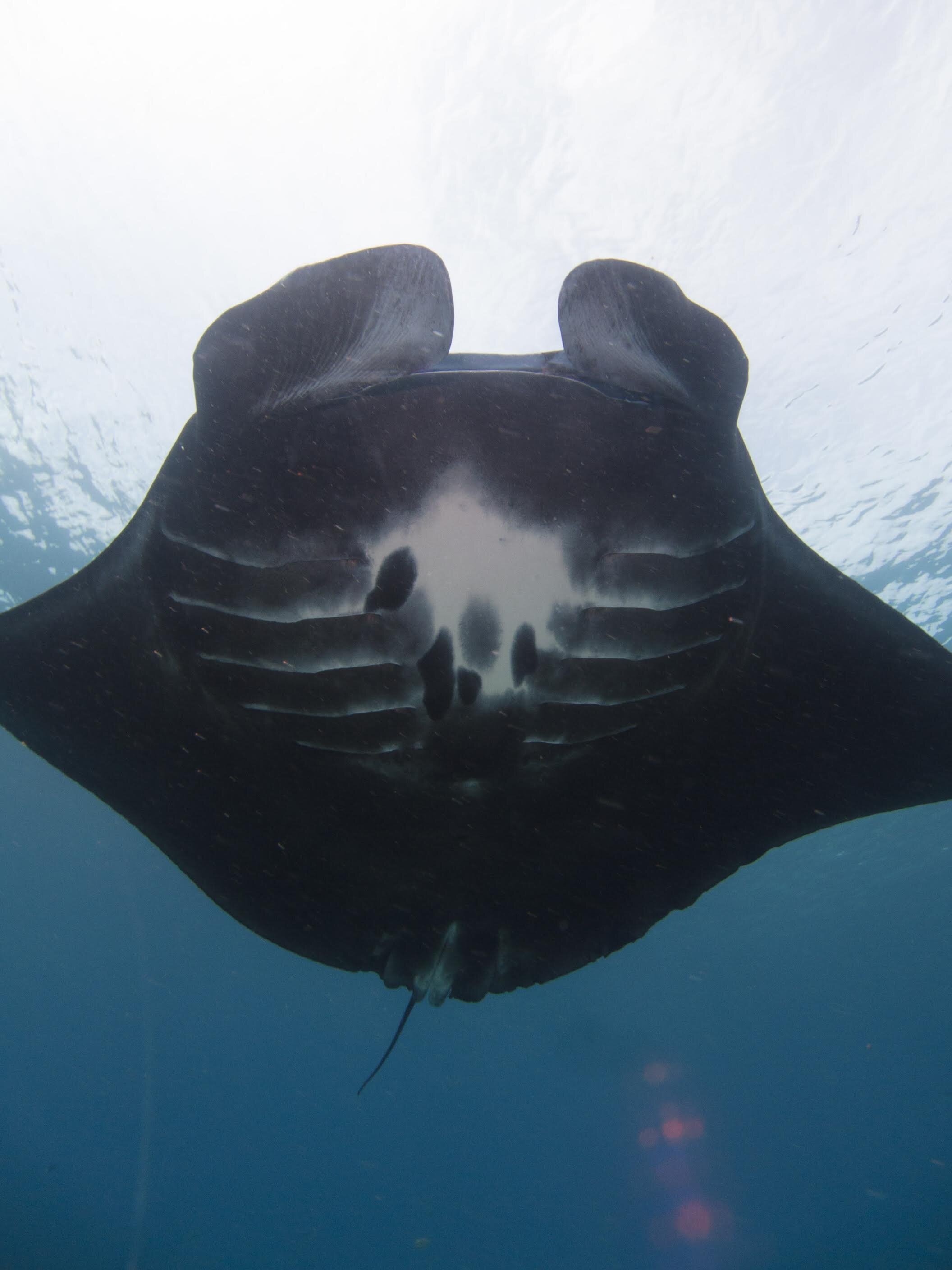Curating one of the largest manta ray databases in the world
It is a truly exciting time for MMF's Indonesian Manta Ray Program. This year we have reached groundbreaking milestones in understanding the local populations of manta rays. With the increase of sighting records to 15,000, we’re able to understand their behaviour much better.
Here are just a few of the highlights:
NUSA PENIDA, BALI
A reef manta hugs the steep drop offs of Nusa Penida’s Manta Bay in search of food
The reef mantas of Nusa Penida are perhaps the best known with the highest number of recorded sightings (nearly 6,000) going back to 2004 and representing over 600 individual mantas.
This rich dataset is now allowing us to analyse the patterns of habit usage in two manta aggregation areas on the western side of Penida island. One being used by a higher number of males including juveniles to feed, and the other being a cleaning station (manta spa) and location for seasonal courtship (a manta bar?) for the adults.
Understanding the types of activities and the number of mantas that display site fidelity (returning to the same areas over time) to specific geographic areas is valuable information when creating management plans for tourism activities. Along with assessing other threats such as microplastic ingestion.
RAJA AMPAT, WEST PAPUA
A giant manta in Raja Ampat, the only place in Indonesia that's home to both species
In the eastern regency of Raja Ampat we find not one, but two species of mantas, the reef (M. alfredi) and the giant (M. birostris).
This is special to just a few areas of the world, thus we are fortunate to have the opportunity to readily observe the different behaviours and habit usage patterns between the two species. The reef manta numbers have steadily climbed to just over 650 known individuals, which are present in large numbers in the Dampier Strait area from November to May before heading off to other lesser known and studied locations.
Raja Ampat is also unique in that it has an unusually high proportion of melanistic (black) morph reef mantas with these sleek ninjas currently making up 40% of the population.
More mysterious still are the giant mantas, which (so far) individually are rarely seen more than once, and the ones we have identified so far are curiously more often females than males. We have observed a handful of individuals crossing from central Raja Ampat (Dampier Strait) to Southern Raja Ampat (Misool). As we start to explore further into these waters we hope to shed more light on these manta mysteries.
KOMODO, FLORES
A juvenile reef manta spotted in the far reaches of the Komodo National Park
Komodo National Park Manta Ray project has surpassed 1,000 known reef mantas and is currently in the top spot amidst Indonesia's locations in terms of known individuals. Most exciting is to see returning mantas from over 10 years ago!
Every year we add new juvenile manta rays to the Komodo database. However the steady climb of individual numbers is also due to an influx of mature individuals. Thus it is likely that other, yet to be studied, nearby manta aggregation areas exist. In the next few years it will be important to identify these locations to offer the mantas better protection.
SANGALAKI, EAST KALIMANTAN (INDONESIAN BORNEO)
One of the melanistic manta rays in our newest database in Sengalaki, East Borneo
Similar on the excitement scale is our newest project in Eastern Borneo. Although the reef mantas of Sangalaki Island have been visited by divers for over 10 years, thus far no efforts have been made to understand this population. We have been collecting old photos dating as far back as 2010. After a month on the ground hosted by our collaborators at SCUBA Junkie and their S.E.A.S conservation team, we have identified 79 individual manta rays.
Interestingly, we seem to have a slightly higher pattern of melanism (15%) compared to the mantas of Penida and Komodo (approximately 10%) but still less than those of Raja Ampat (40%). These colouration statistics may give us a hint as to which populations are more closely related.
Now that the data from many of the Indonesian areas where we work is beginning to unveil the different lifestyles of the mantas that use them, we are really excited to sink our teeth into the data, and wrap our brains around these mysterious mantas.
Within the coming years we aim to provide crucial information on the numbers of mantas and how they use their habitats within the archipelago nation so we can inform management authorities and better protect these gentle giants.
Stay tuned for an exciting 2018 for MMF's Indonesian Manta Ray Program.




